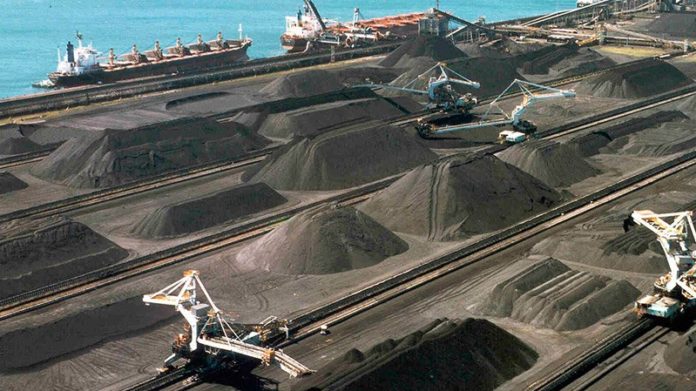
Booming coal profits more than made up for the drop in Exxaro’s income from its iron ore investment in the six months to end-June but the group’s results could have been so much better had it not been for Transnet Freight Rail’s (TFR) failure to rail the contracted volumes of export coal.
TFR railage volumes to the Richards Bay Coal Terminal (RBCT) slumped to 58.72mt during 2021 which was the worst since 1996 but railages so far this year have slumped even further despite TFR claiming it had had greatly reduced the incidences of disruption from cable theft on the line.
The outlook is that Exxaro – and the country’s other major coal exporters such as Thungela Resources and Seriti – are going to miss out on the current period of record coal demand and prices because TFR’s problems will not be fixed in time .
The boom times could last well into next year but, according to Exxaro executive Sakkie Swanepoel, “Fixing TFR is not going to be a quick process. TFR has indicated that for the next two years their ability to move coal to the RBCT is probably in the area of 60mt per annum.
“So far this year on an annualised basis they are performing at around 54mt/year so they are not even close to the 60mt. We had hoped that last year’s 58mt was the bottom but so far this year exports are even lower than last year. We are concerned. We don’t think it is going to improve materially anytime soon.”
Coal prices fob (free on board) Richards Bay are currently sitting at record levels north of $300/t which is treble the going prices that ruled in 2021. Exxaro CEO Nombasa Tsengwa reckons price levels will remain at those levels for at least the next quarter before “moderating” in 2023 to levels between $250/t and $300/t.
The bottom line is that Exxaro could more than double its coal revenues and profits if it was able to match the export levels it achieved in 2020 before TFR went off the rails.
Swanepoel comments, “We did 2.5mt of coal exports in the first half and should do around 5.6mt for the year to end-December.
“We did 12mt of exports in 2020 and – despite selling some collieries since then – we have the ability at our Mafube, Grootegeluk and Belfast mines to increase export production to 12mt /year again if we had the confidence that the exports logistics channel was going to perform. “
Exxaro is doing its best to get coal out of the country using alternative routes in a situation where Swanepoel comments “at $300/t it’s no longer a matter of economics because the coal price is so high. It’s not a matter of trucking capacity either because there are enough trucks to move the coal. The constraint is port capacity.”
A trading statement for the six months to end-June issued by Grindrod today shows the main alternative is Maputo where Grindrod operates the Matola coal export terminal. Grindrod reported that the Matola terminal increased exports by 24% to 3.8mt compared with the same period last year.
Swanepoel said Exxaro was trucking coal to Maputo and was also selling coal to third parties that had logistics capacity so they could export it via their channels.
Exxaro trebled net operating profit to R9.2bn (previous comparable period – R3bn) in the six months to end-June but total comprehensive profit only rose to R11bn ($9.8bn) because of sharply higher tax and a drop in the income from the equity-accounted investment in the Sishen Iron Ore Company to R4.2bn (R6.6bn).











